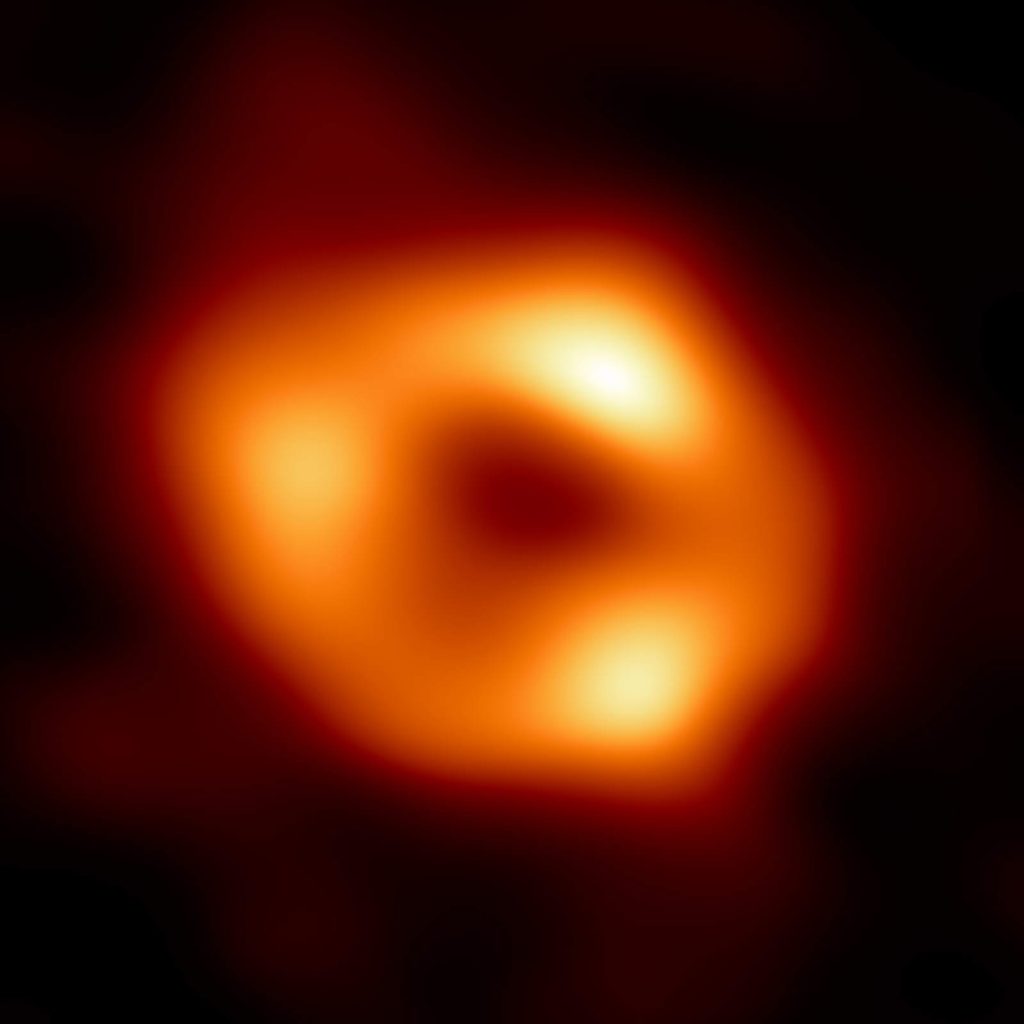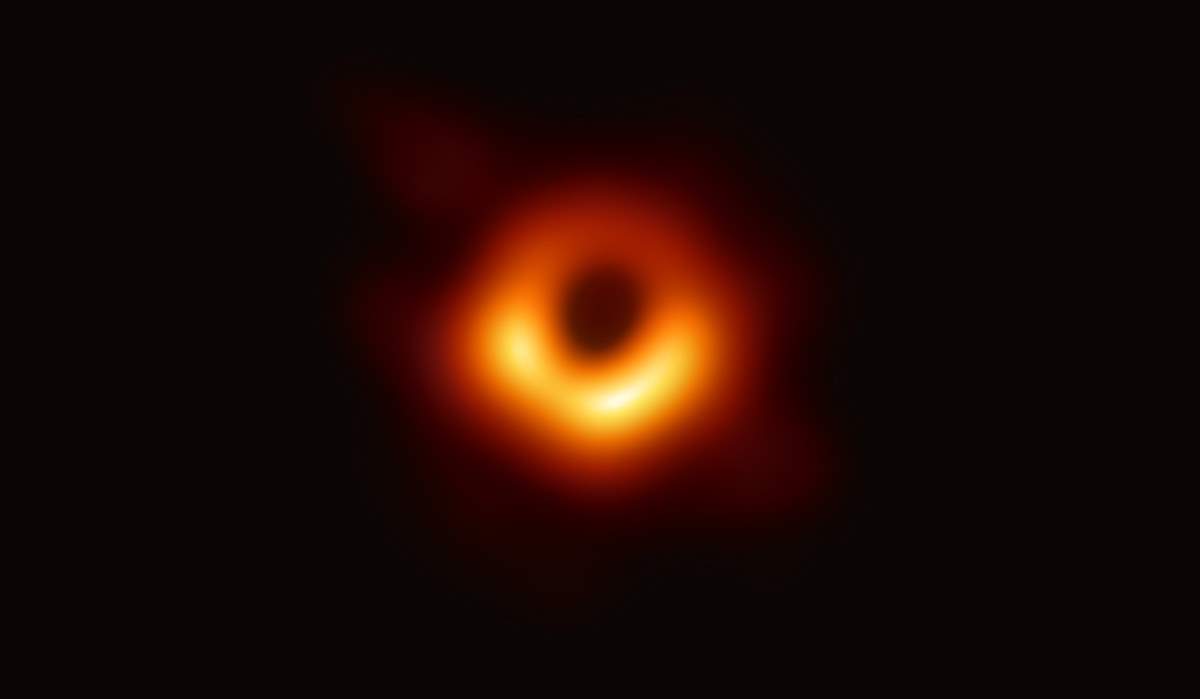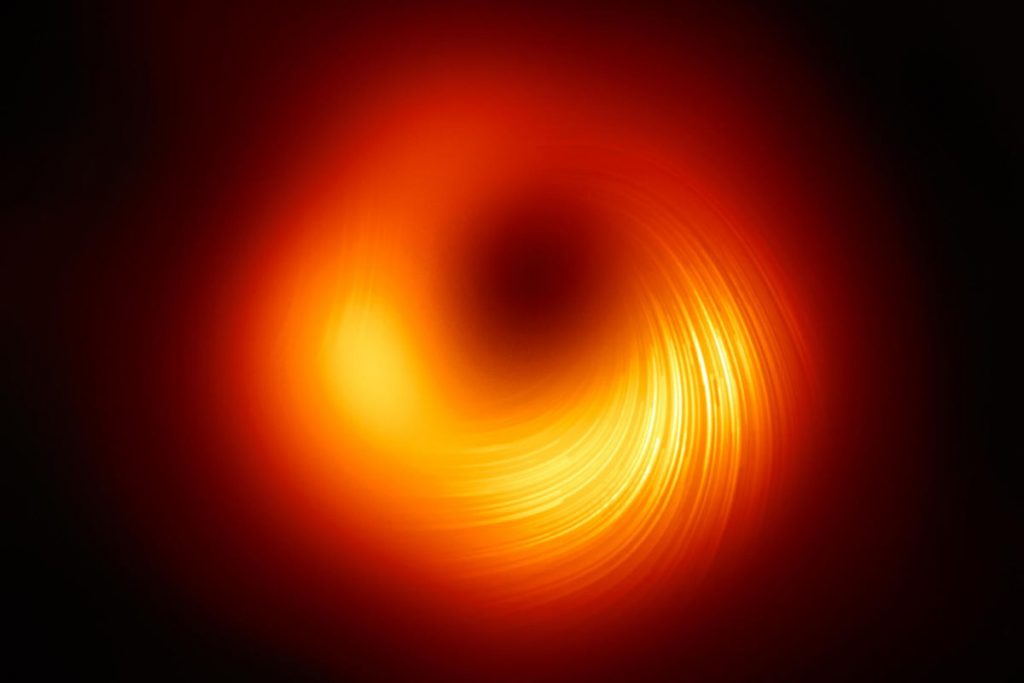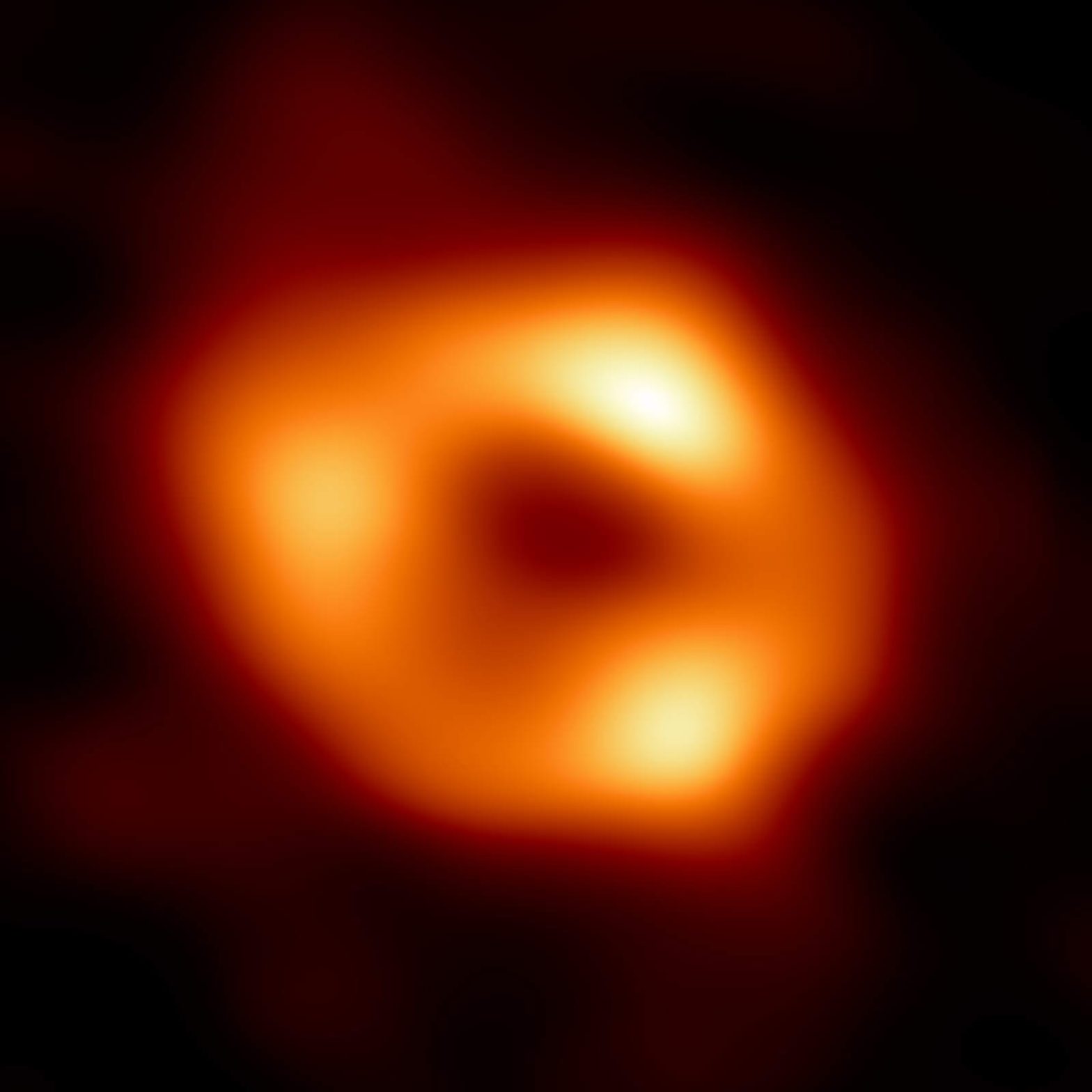On May 12, 2022, the Event Horizon Telescope (EHT), an international collaboration capturing images of black holes, announced the first-ever image of the Sagittarius A*, the Supermassive Black Hole at the center of the Milky Way. After the image of the nearby elliptical galaxy Messier 87’s (M87’s) supermassive black hole, also revealed by the EHT in April 2019, this is the second confirmed image of a black hole.
Our galaxy Milky Way has a supermassive black hole at its center. Scientists already knew it but we’ve never actually seen it – until now.
The Event Horizon Telescope, a large telescope array consisting of a global network of radio telescopes (the result is a using a virtual Earth-sized telescope), funded by the National Science Foundation, has released the first image of our galactic black hole.
Astronomers produced the image of the Sagittarius A* from radio observations in April 2017. The image ring of soft, wild-orange light is the accretion disk, the super-heated (because of the inescapable pull of the black hole) material surrounding the black hole. Now, we are one hundred percent sure that the Milky Way galaxy contains a supermassive black hole in its center.

The shadow in the center is the part that contains the black hole’s event horizon (see notes 1), a point that even light cannot escape, also known as the “point of no return”.
Sagittarius A*
Sagittarius A* is a supermassive black hole that is 26,000 light-years away from Sun, and has a mass of about 4.3 million solar masses.
What is a black hole?
Once the fuel in the core of a high-mass star has completely burned out, the star collapses, sometimes producing a supernova explosion that releases an enormous amount of energy, detectable across the electromagnetic spectrum. If the star’s mass is more than about 25 times that of our Sun, the pressure of neutrons becomes insufficient to stop the collapse and a stellar-mass black hole can form.

Related: First-Ever Image of a Black Hole
Intermediate-mass black holes have masses between about 100 and 100,000 times that of our Sun. Until recently, the existence of intermediate-mass black holes had only been theorized. But, recently,
- NASA’s Chandra X-ray Observatory has identified several intermediate-mass black hole candidates by observing X-rays emitted by the gas surrounding the black hole.
- The Laser Interferometer Gravitational Wave Observatory, or LIGO, funded by the National Science Foundation, detected the merger of two stellar-mass black holes with masses 65 and 85 times that of our Sun forming an intermediate-mass black hole of 142 solar masses. Some of the mass was converted to energy and about nine solar masses were radiated away as gravitational waves.
Supermassive black holes contain between a million and a billion times as much mass as a stellar-mass black hole. Scientists are uncertain how supermassive black holes form, but one theory is that they result from the combining of stellar-mass black holes.
Milky Way’s center black hole, Sagittarius A* is a supermassive black hole.

A brief history of the discovery of Sagittarius A*
- American physicist and radio engineer Karl Guthe Jansky (October 22, 1905 – February 14, 1950) announced his discovery of radio waves emanating from the Milky Way in the constellation Sagittarius in April 1933. Karl Guthe is widely considered the “father of radioastronomy”.
- Further observations by the Australian research physicists and radio scientists Jack Piddington (6 November 1910 – 16 July 1997) and Harry Clive Minnett OBE (12 June 1917 – 20 December 2003) discovered a discrete and bright “Sagittarius-Scorpius” radio source at the galactic center.
- Later observations showed that Sagittarius A actually consists of several overlapping sub-components: a bright and very compact component, Sgr A*, was discovered on February 13 and 15, 1974, by American astronomers Bruce Balick and Robert Brown. The name with an asterisk, Sgr A* was coined by Brown in a 1982 paper because the radio source was “exciting”, and excited states of atoms are denoted with asterisks.
- In the 1980s, scientists were already thinking that the central component of Sgr A* was most probably a black hole.
- In 1994, infrared and submillimetre spectroscopy studies by a Berkeley team involving Nobel Laureate Charles H. Townes (American physicist, (July 28, 1915 – January 27, 2015) and future Nobelist Reinhard Genzel (German astrophysicist, born 24 March 1952) showed that the mass of Sgr A* was tightly concentrated and of the order 3 million Suns. Reinhard Genzel and Andrea Ghez were awarded the 2020 Nobel Prize in Physics for their discovery that Sagittarius A* is a supermassive compact object.
- On October 16, 2002, an international team led by Reinhard Genzel at the Max Planck Institute for Extraterrestrial Physics reported the observation of the motion of the star S2 near Sagittarius A* throughout a period of ten years. Scientists’ analysis strengthened the evidence for a massive black hole at the center of the Milky Way.
- After monitoring stellar orbits around Sagittarius A* for 16 years under the lead of Reinhard Genzel, physicist Stefan Gillessen and his team estimated the object’s mass at 4.31±0.38 million solar masses. The result was announced in 2008 and published in The Astrophysical Journal in 2009.
- On January 5, 2015, NASA’s Chandra X-ray Observatory detected a massive Outburst from the Milky Way’s Black Hole (at this point, scientists were already sure that there was a supermassive black hole at the center of the Milky Way. The researchers have two main theories about what caused Sgr A* to erupt in this extreme way:
- The first is that an asteroid came too close to the supermassive black hole and was torn apart by gravity. The debris from such a tidal disruption became very hot and produced X-rays before disappearing forever across the black hole’s point of no return, or event horizon.
- A second theory is that the magnetic field lines within the gas flowing towards Sgr A* could be tightly packed and become tangled. These field lines may occasionally reconfigure themselves and produce a bright outburst of X-rays. These types of magnetic flares are seen on the sun, and the Sgr A* flares have similar patterns of intensity.
- On 13 May 2019, astronomers using the Keck Observatory witnessed a sudden brightening of Sgr A*, which became 75 times brighter than usual, suggesting that the supermassive black hole may have encountered another object.
- And now, on May 12, 2022, the Event Horizon Telescope (EHT) announced the first-ever image of the Sagittarius A*.
Notes
- In general relativity, an event horizon (EH) is a region in spacetime beyond which events cannot affect an outside observer. In layman’s terms, it is defined as the shell of “points of no return”, i.e., the boundary at which the gravitational pull of a massive object becomes so great as to make escape impossible. An event horizon is most commonly associated with black holes. Light emitted from inside the event horizon can never reach the outside observer. Likewise, any object approaching the horizon from the observer’s side appears to slow down and never quite pass through the horizon, with its image becoming more and more redshifted as time elapses. This means that the wavelength of the light emitted from the object is getting longer as the object moves away from the observer. The traveling object, however, experiences no strange effects and does, in fact, pass through the horizon in a finite amount of proper time.
Sources
- Astronomers reveal the first image of the black hole at the heart of our galaxy, Sagittarius A* on the Event Horizon Telescope website
- Sagittarius A* on Wikipedia
- “This is it! Meet the Supermassive Black Hole at the Heart of the Milky Way” on Universe Today
- Supermassive Black Hole Sagittarius A* on the NASA website
- “Telescopes Get Extraordinary View of Sagittarius A*, Milky Way’s Black Hole” on the NASA Jet Propulsion Laboratory website
- “NASA’s Chandra Detects Record-Breaking Outburst from Milky Way’s Black Hole” on the NASA website
- How Many Elephants are Left in the World in 2025? - August 17, 2025
- Moon Landings: All-Time List [1966-2025] - February 2, 2025
- What Is Max-Q and Why Is It Important During Rocket Launches? - January 16, 2025
